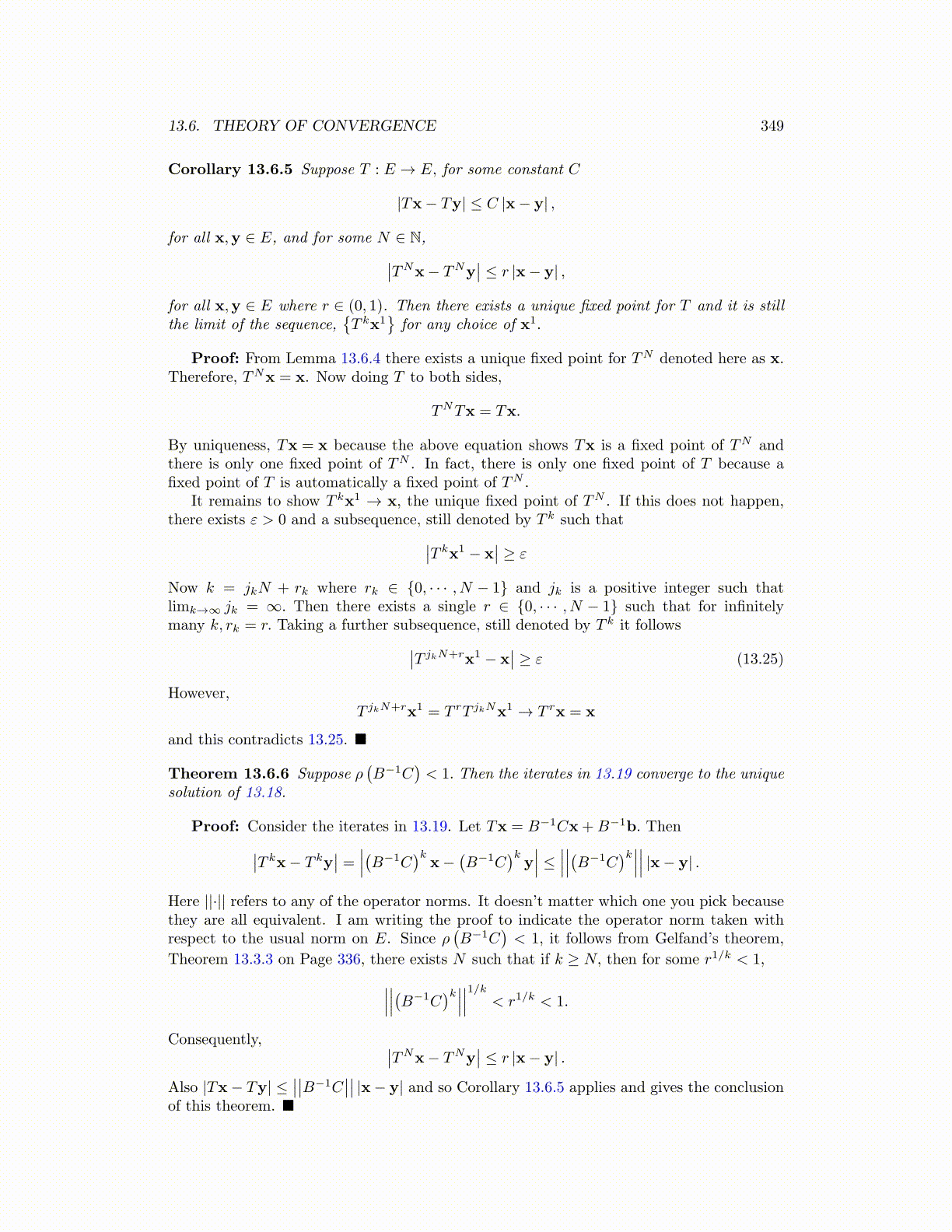
13.6. THEORY OF CONVERGENCE 349
Corollary 13.6.5 Suppose T : E → E, for some constant C
|Tx− Ty| ≤ C |x− y| ,
for all x,y ∈ E, and for some N ∈ N,∣∣TNx− TNy∣∣ ≤ r |x− y| ,
for all x,y ∈ E where r ∈ (0, 1). Then there exists a unique fixed point for T and it is stillthe limit of the sequence,
{T kx1
}for any choice of x1.
Proof: From Lemma 13.6.4 there exists a unique fixed point for TN denoted here as x.Therefore, TNx = x. Now doing T to both sides,
TNTx = Tx.
By uniqueness, Tx = x because the above equation shows Tx is a fixed point of TN andthere is only one fixed point of TN . In fact, there is only one fixed point of T because afixed point of T is automatically a fixed point of TN .
It remains to show T kx1 → x, the unique fixed point of TN . If this does not happen,there exists ε > 0 and a subsequence, still denoted by T k such that∣∣T kx1 − x
∣∣ ≥ ε
Now k = jkN + rk where rk ∈ {0, · · · , N − 1} and jk is a positive integer such thatlimk→∞ jk = ∞. Then there exists a single r ∈ {0, · · · , N − 1} such that for infinitelymany k, rk = r. Taking a further subsequence, still denoted by T k it follows∣∣T jkN+rx1 − x
∣∣ ≥ ε (13.25)
However,T jkN+rx1 = T rT jkNx1 → T rx = x
and this contradicts 13.25. ■
Theorem 13.6.6 Suppose ρ(B−1C
)< 1. Then the iterates in 13.19 converge to the unique
solution of 13.18.
Proof: Consider the iterates in 13.19. Let Tx = B−1Cx+B−1b. Then∣∣T kx− T ky∣∣ = ∣∣∣(B−1C
)kx−
(B−1C
)ky∣∣∣ ≤ ∣∣∣∣∣∣(B−1C
)k∣∣∣∣∣∣ |x− y| .
Here ||·|| refers to any of the operator norms. It doesn’t matter which one you pick becausethey are all equivalent. I am writing the proof to indicate the operator norm taken withrespect to the usual norm on E. Since ρ
(B−1C
)< 1, it follows from Gelfand’s theorem,
Theorem 13.3.3 on Page 336, there exists N such that if k ≥ N, then for some r1/k < 1,∣∣∣∣∣∣(B−1C)k∣∣∣∣∣∣1/k < r1/k < 1.
Consequently, ∣∣TNx− TNy∣∣ ≤ r |x− y| .
Also |Tx− Ty| ≤∣∣∣∣B−1C
∣∣∣∣ |x− y| and so Corollary 13.6.5 applies and gives the conclusionof this theorem. ■